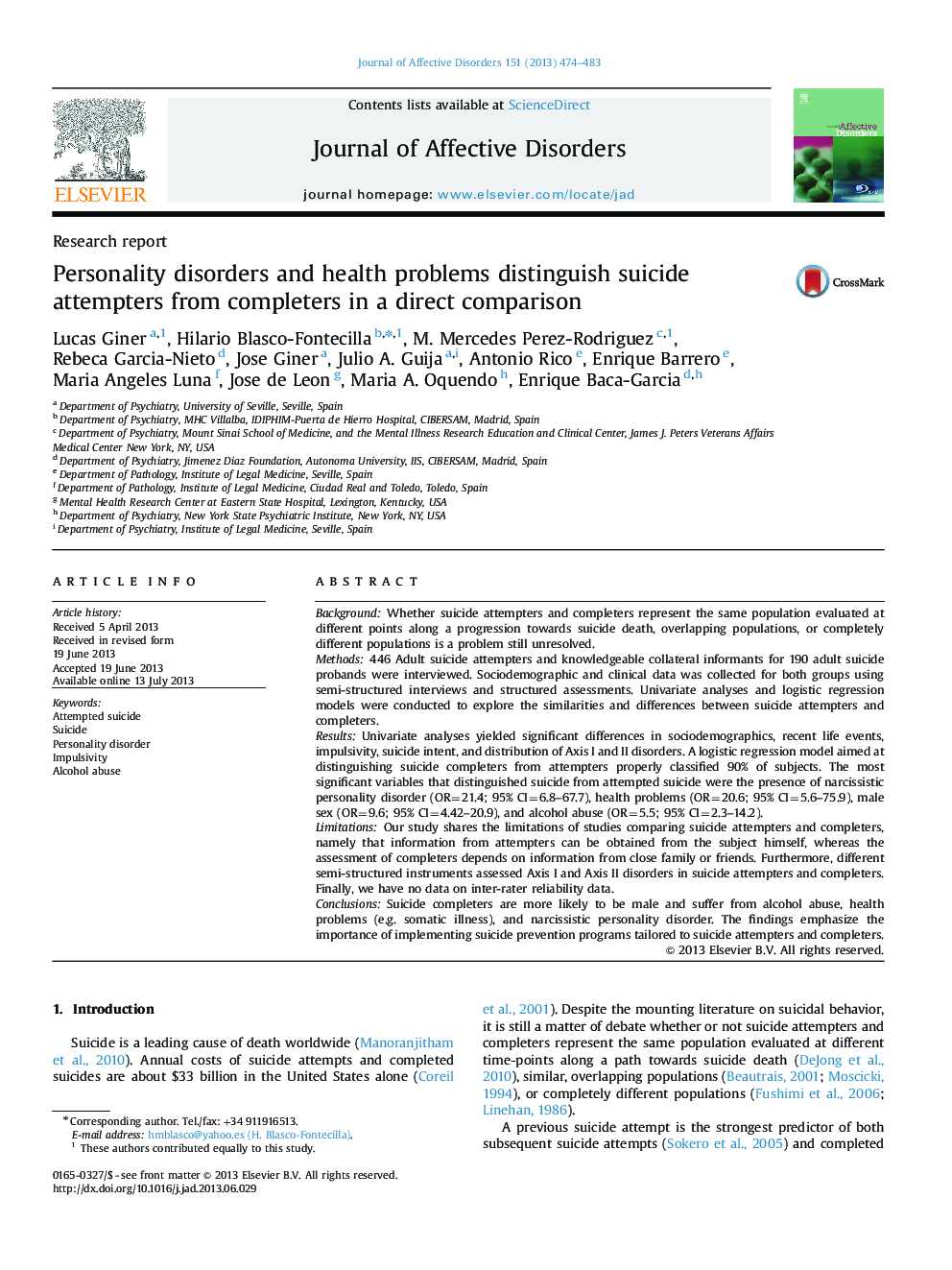| کد مقاله | کد نشریه | سال انتشار | مقاله انگلیسی | نسخه تمام متن |
|---|---|---|---|---|
| 6233895 | 1277554 | 2013 | 10 صفحه PDF | دانلود رایگان |
BackgroundWhether suicide attempters and completers represent the same population evaluated at different points along a progression towards suicide death, overlapping populations, or completely different populations is a problem still unresolved.Methods446 Adult suicide attempters and knowledgeable collateral informants for 190 adult suicide probands were interviewed. Sociodemographic and clinical data was collected for both groups using semi-structured interviews and structured assessments. Univariate analyses and logistic regression models were conducted to explore the similarities and differences between suicide attempters and completers.ResultsUnivariate analyses yielded significant differences in sociodemographics, recent life events, impulsivity, suicide intent, and distribution of Axis I and II disorders. A logistic regression model aimed at distinguishing suicide completers from attempters properly classified 90% of subjects. The most significant variables that distinguished suicide from attempted suicide were the presence of narcissistic personality disorder (OR=21.4; 95% CI=6.8-67.7), health problems (OR=20.6; 95% CI=5.6-75.9), male sex (OR=9.6; 95% CI=4.42-20.9), and alcohol abuse (OR=5.5; 95% CI=2.3-14.2).LimitationsOur study shares the limitations of studies comparing suicide attempters and completers, namely that information from attempters can be obtained from the subject himself, whereas the assessment of completers depends on information from close family or friends. Furthermore, different semi-structured instruments assessed Axis I and Axis II disorders in suicide attempters and completers. Finally, we have no data on inter-rater reliability data.ConclusionsSuicide completers are more likely to be male and suffer from alcohol abuse, health problems (e.g. somatic illness), and narcissistic personality disorder. The findings emphasize the importance of implementing suicide prevention programs tailored to suicide attempters and completers.
Journal: Journal of Affective Disorders - Volume 151, Issue 2, November 2013, Pages 474-483
